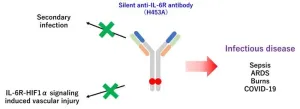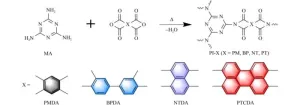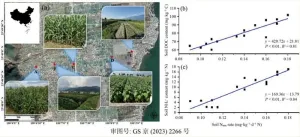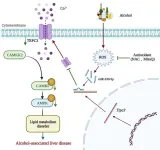(Press-News.org) A new analysis of trial data on pregnant smokers, led by researchers at Queen Mary University of London, finds that the regular use of nicotine replacement products during pregnancy is not associated with adverse pregnancy events or poor pregnancy outcomes.
The PREP 2 study used data collected from over 1100 pregnant smokers attending 23 hospitals in England and 1 stop-smoking service in Scotland to compare pregnancy outcomes in women who did or did not use nicotine in the form of e-cigarettes (EC) or nicotine patches regularly during their pregnancy. Researchers took measurements of salivary cotinine levels at baseline and towards the end of pregnancy, and gathered information about each participant’s use of cigarettes or types of NRT, respiratory symptoms, and the birth weight and other data of their babies at birth.
The study found that e-cigarettes were more commonly used in the group studied than nicotine patches (47% compared with 21%), and also confirmed previous unexpected findings that EC use may reduce respiratory infections in vapers, possibly because the main ingredients of EC, aerosol, propylene glycol, and glycerine, have antibacterial effects.
Women who smoked and also used one of the nicotine replacement products during their pregnancy had babies with the same birth weights as women who only smoked, while babies born to women who did not smoke during pregnancy did not differ in birth weight, whether the women did or did not use nicotine products. Regular use of nicotine products was not associated with any adverse effects in mothers or their babies.
Lead researcher, Professor Peter Hajek from the Wolfson Institute of Population Health, Queen Mary University of London, said: "The trial contributes answers to two important questions, one practical and one concerning our understanding of risks of smoking. E-cigarettes helped pregnant smokers quit without posing any detectable risks to pregnancy compared with stopping smoking without further nicotine use. Using nicotine containing aids to stop smoking in pregnancy thus appears safe. The harms to pregnancy from smoking, in late pregnancy at least, seem to be due to other chemicals in tobacco smoke rather than nicotine."
Prof Tim Coleman from the University of Nottingham’s Smoking in Pregnancy Research Group, which led trial recruitment said: “Smoking in pregnancy is a massive public health problem and nicotine containing aids can help pregnant women to stop smoking, but some clinicians are reticent about providing NRT or e-cigarettes in pregnancy. This study provides further, reassuring evidence that tobacco smoke chemicals rather than nicotine are responsible for smoking-related harms, so using nicotine containing aids to quit is vastly preferable to continuing to smoke when pregnant.”
Professor Linda Bauld, Bruce and John Usher Chair in Public Health at the University of Edinburgh and a study co-investigator said: “Clinicians, pregnant women and their families have questions about the safety of using nicotine replacement therapy (NRT) or e-cigarettes during pregnancy. Women who continue to smoke during pregnancy often find it difficult to stop but products like NRT or e-cigarettes can help them to do so. These results suggest that NRT or vaping can be used as part of a quit attempt without adverse effects. Our findings should be reassuring, and provide further important evidence to guide decision-making on smoking cessation during pregnancy.”
The study, conducted by researchers at Queen Mary University of London, University of New South Wales (Australia), University of Nottingham, St George’s University of London, University of Stirling, University of Edinburgh, and King’s College London, and St George’s University Hospitals NHS Foundation Trust, analysed data collected in the Pregnancy Trial of E-cigarettes and Patches (PREP) randomised controlled trial, funded by the National Institute for Health and Care Research (NIHR).
ENDS
NOTES TO EDITORS
Contact: Honey Lucas
Faculty Communications Officer – Medicine and Dentistry
Queen Mary University of London Email: h.lucas@qmul.ac.uk or contact press@qmul.ac.uk
The published paper:
“Safety of e-cigarettes and nicotine patches as stop-smoking aids in pregnancy: Secondary analysis of the Pregnancy Trial of E-cigarettes and Patches (PREP) randomised controlled trial”.
Journal: Addiction
Publication date and embargo: Embargoed until 8AM (UK TIME) WEDNESDAY 17 JANUARY 2024
DOI: 10.1111/add.16422
Available after publication at: https://onlinelibrary.wiley.com/doi/10.1111/add.16422
Authors:
Francesca Pesola, PhD (1), Katie Myers Smith, PhD (1), Anna Phillips-Waller, BSc (1) , Dunja Przulj, PhD (1), Christopher Griffiths, D.Phil (1), Robert Walton MD (2), Hayden McRobbie PhD (3), Tim Coleman MD (4), Sarah Lewis, PhD (4), Rachel Whitemore, BA (4), Miranda Clark BSc (4), Michael Ussher, PhD (5), Lesley Sinclair MSc (6), Emily Seager PhD (1), Sue Cooper, PhD (4), Linda Bauld, PhD (6), Felix Naughton, PhD (7), Peter Sasieni, PhD (8), Isaac Manyonda PhD (9), Peter Hajek, PhD (1).
1) Wolfson Institute of Population Health, Queen Mary University of London.
2) Blizard Institute, Queen Mary University of London.
3) National Drug and Alcohol Research Centre, University of New South Wales, Sydney, Australia.
4) Centre for Academic Primary Care, University of Nottingham.
5) Division of Population Health Sciences and Education, St. George’s, University of London and Institute of Social Marketing and Health, University of Stirling.
6) Usher Institute and SPECTRUM Consortium, University of Edinburgh.
7) School of Health Sciences, University of East Anglia.
8) The Cancer Research UK and King’s College London Cancer Prevention Trials Unit, King’s College London, UK. Please note, Peter Sasieni is now Professor of Cancer Epidemiology, Centre Co-Lead for the Centre for Cancer Screening, Prevention and Early Diagnosis, in the Wolfson Institute of Population Health at Queen Mary University of London.
9) St George’s University Hospitals NHS Foundation Trust.
Funding information:
The study was funded by the National Institute for Health and Care Research (NIHR), ref: 15/57/85.
About Queen Mary www.qmul.ac.uk
At Queen Mary University of London, we believe that a diversity of ideas helps us achieve the previously unthinkable.
Throughout our history, we’ve fostered social justice and improved lives through academic excellence. And we continue to live and breathe this spirit today, not because it’s simply ‘the right thing to do’ but for what it helps us achieve and the intellectual brilliance it delivers.
Our reformer heritage informs our conviction that great ideas can and should come from anywhere. It’s an approach that has brought results across the globe, from the communities of east London to the favelas of Rio de Janeiro.
We continue to embrace diversity of thought and opinion in everything we do, in the belief that when views collide, disciplines interact, and perspectives intersect, truly original thought takes form.
About the National Institute for Health and Care Research (NIHR)
The mission of the National Institute for Health and Care Research (NIHR) is to improve the health and wealth of the nation through research. We do this by:
Funding high quality, timely research that benefits the NHS, public health and social care;
Investing in world-class expertise, facilities and a skilled delivery workforce to translate discoveries into improved treatments and services;
Partnering with patients, service users, carers and communities, improving the relevance, quality and impact of our research;
Attracting, training and supporting the best researchers to tackle complex health and social care challenges;
Collaborating with other public funders, charities and industry to help shape a cohesive and globally competitive research system;
Funding applied global health research and training to meet the needs of the poorest people in low and middle income countries.
NIHR is funded by the Department of Health and Social Care. Its work in low and middle income countries is principally funded through UK Aid from the UK government.
END
E-cigarettes help pregnant smokers quit without risks to pregnancy
2024-01-17
ELSE PRESS RELEASES FROM THIS DATE:
John Innes Centre researcher honored with prestigious Blavatnik award
2024-01-17
The pioneering research of Dr Yiliang Ding investigating the structure and function of RNA in living cells has been recognised with a major award.
Yiliang a group leader at the John Innes Centre, is among nine recipients of the 2024 Blavatnik Awards for Young Scientists in the UK, announced today by the Blavatnik Family Foundation and The New York Academy of Sciences.
The awards recognise research that is transforming medicine, technology, and our understanding of the world across three categories: Chemical Sciences, Physical Sciences & Engineering, and ...
Mass-producible miniature quantum memory
2024-01-17
Researchers at the University of Basel have built a quantum memory element based on atoms in a tiny glass cell. In the future, such quantum memories could be mass-produced on a wafer.
It is hard to imagine our lives without networks such as the internet or mobile phone networks. In the future, similar networks are planned for quantum technologies that will enable the tap-proof transmission of messages using quantum cryptography and make it possible to connect quantum computers to each other.
Like their conventional counterparts, such quantum networks require memory elements in which information can be temporarily stored ...
A new targeted treatment calms the cytokine storm
2024-01-17
Osaka, Japan – Cytokines are chemical messengers that help the body get rid of invading bacteria and viruses, and control inflammation. The body carefully balances cytokines because they help keep the immune system healthy. However, this balance is upset if the immune system overreacts. A serious infection or a severe burn can unleash a cytokine storm in the body. During the storm—also called cytokine release syndrome (CRS)—the body produces too many cytokines, leading to life-threatening inflammation.
Interleukin-6 (IL-6) is a key cytokine in the storm because it helps to drive the inflammation that damages ...
Tiny AI-based bio-loggers revealing the interesting bits of a bird’s day
2024-01-17
Osaka, Japan – Have you ever wondered what wildlife animals do all day? Documentaries offer a glimpse into their lives, but animals under the watchful eye do not do anything interesting. The true essence of their behaviors remains elusive. Now, researchers from Japan have developed a camera that allows us to capture these behaviors.
In a study recently published in PNAS Nexus, researchers from Osaka University have created a small sensor-based data logger (called a bio-logger) that automatically detects and records video of infrequent behaviors in wild seabirds without supervision by researchers.
Infrequent behaviors, such as diving into the water for food, can ...
SDG-washing found among Canada's top companies
2024-01-17
Canada's biggest companies often speak of their plans to be more sustainable, but a new study found corporations aren't fully backing up those commitments.
A team of University of Waterloo researchers concluded that corporate investing in communities fell despite an increase in companies committing to the United Nation's Sustainable Development Goals (SDGs) over the last decade.
Researchers investigated the community investment of Canada's 58 leading private-sector companies as a percentage of their net profit after tax to determine whether introducing SDGs created ...
Enhanced photoelectrochemical water splitting with a donor-acceptor polyimide
2024-01-17
Polyimide (PI) has emerged as a promising organic photocatalyst owing to its distinct advantages of high visible-light response, facile synthesis, molecularly tunable donor-acceptor structure, and excellent physicochemical stability. However, the synthesis of high-quality PI photoelectrode remains a challenge, and photoelectrochemical (PEC) water splitting for PI has been less studied.
A research group of Huiyan Zhang and Sheng Chu from Southeast University prepared PI films by a ...
Spider venom heart drug a step closer
2024-01-17
A spider venom molecule being investigated by a University of Queensland team has met critical benchmarks towards becoming a treatment for heart attack and stroke.
Associate Professor Nathan Palpant and Professor Glenn King from UQ’s Institute for Molecular Bioscience have previously shown that the drug candidate Hi1a protects cells from the damage caused by heart attack and stroke.
Dr Palpant said a subsequent study has put the drug through a series of preclinical tests designed to mimic real-life treatment scenarios.
“These tests are a major step towards helping us understand how Hi1a would work ...
Is soil nitrogen mineralization important in agricultural intensive areas?
2024-01-17
Soil nitrogen mineralization (Nmin) is a key process that converts organic N into mineral N that controls soil N availability to plants. However, regional assessments of soil Nmin in cropland and its affecting factors are lacking, especially in relation to variation in elevation. Nitrogen is an essential nutrient for crops but mineral N in soil, the only form that can be absorbed and used by crops, represents only about 1% of total soil N. Although N fertilization is commonly a necessary method for supplying N to crops, N release due to excess N fertilizer in the environment ...
Hepatic TRPC3: an emerging regulator of alcohol-associated liver disease
2024-01-17
Excessive alcohol intake is strongly associated with alcohol-associated liver disease (ALD) which accounts for 25% and 30% of deaths from cirrhosis and hepatocellular carcinoma. Impairment of Ca2+ influx and Ca2+-mediated signaling in ALD suggests that Ca2+ channels are important in ALD pathological progression.
TRPC (transient receptor potential cation channel protein C) is an evolutionarily conserved non-selective cation channel protein primarily located in the cell membrane with six transmembrane segments. So far four TRPC subfamilies have been identified, categorized into TRPC1, TRPC2, TRPC4/5, and TRPC3/6/7. Among them, TRPC3 is the most well-studied ...
USC Stem Cell study throws our understanding of gene regulation for a loop
2024-01-17
The blueprint for human life lies within the DNA in the nucleus of each of our cells. In human cells, around six and a half feet of this genetic material must be condensed to fit inside the nucleus. DNA condensation is not random. To function properly, the genetic material is highly organized into loop structures that often bring together widely separated sections of the genome critical to the regulation of gene activity. In a new paper published in Nature Communications, USC Stem Cell scientists from the laboratory ...








